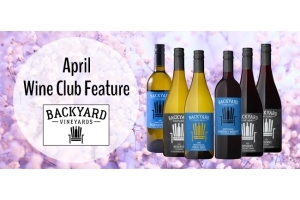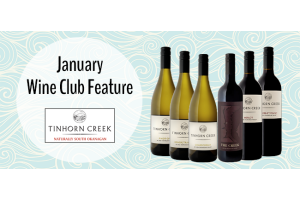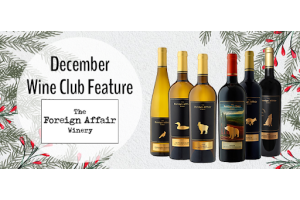Wine 101: The Price of B.C. Wine

I certainly heard it more when I was a full-time wine guy on the floor in restaurants, but it’s a question I field on occasion nowadays as well, whether leading a seminar, recommending a bottle for someone, or it’s even been lobbed over Twitter and on Facebook.
“Why is British Columbian wine so expensive?”
Before responding to this, I should mention that much of this post relates to Ontario wine and Nova Scotian wine too – however my experience with the British Columbian wine industry, and having gained more of an intimate knowledge of its workings from my experience doing occasional contract work with the B.C. Wine Institute presenting trade education seminars, make it more appropriate for me to focus my specific comments directly on the wine of my home province, whereas it may also apply to those other places in a broader sense.
So, back to the question, which is usually bolstered with comments that you can find a decent bottle of French, Spanish or Chilean wine for just under 10 bucks, yet to get anything good from B.C. – you have to spend $15-17 at the very least, with most of the dependable quality wine coming in anywhere above $18 and (sometimes much) higher.
Now, one of the common theories involves supply and demand, and an assumption that there are wineries out there who have basically decided on a price for their wine out of greed, picking a crazy-high number out of the air because that’s where they want to see their wine in the market, a luxury brand with a tag of $50-plus, regardless of quality or efforts that go into the bottle. I’m not gonna lie, nor am I going to be an apologist – it can and does happen on occasion, but by no means is this unique to British Columbia. One only has to look down to California or over to France to see artificially-inflated wine prices.
I do believe those examples are few and far between, and you can usually separate the wheat from the chaff (Is this $50 wine really worth $50?) by those who have received consistent critical acclaim. The vast majority of wine critics, writers and sommeliers don’t praise or endorse wines in a specific price tier, from cheap and cheerful to the luxury level, unless they believe they’re worth what you have to fork out for ‘em. Value can indeed come at any price. Generally, great wines in the higher tiers are priced as such due to intricate and high-craft farming techniques, low yields in favour of better quality fruit, plus all of those not-cheap techniques being employed in the winery: plenty of labour costs to be able to do labour-heavy things (double hand-sorting of fruit, etc.). Plus necessary tools like ridiculously expensive oak barrels and other equipment.
You see, in places like Chile, California and Spain, you’re way more likely to find high-output, industrial-level (Dare I say factory-style?) production around, wineries churning out millions upon millions of cases. A lot can be made and your costs cut when you can build your profits on volume. Here in British Columbia, we’re tiny – about two and a half million cases made last year. That’s pretty much the same annual volume of Kendall-Jackson Chardonnay coming out of California. Now, by no means am I saying that this industrial-level production is necessarily a bad thing; there are plenty of good examples of wines that are produced in the multi-millions, your Cono Sur Pinot Noirs, your Torres product out of Spain, etc. It’s just that we simply don’t operate on that ‘factory’ level, things are (mostly) much more of a hand-crafted style here with the use of premium fruit. Really, when’s the last time you saw a machine harvester in the Okanagan? Since we don’t really operate on that industrial level, we can’t compete in it.
That hand-crafted style also takes a lot of labour, which is quite expensive around these parts – compared with what much of California pays, or Spain, etc. We also don’t enjoy the benefit of chateaus, properties or vineyards that have been passed down through generations. Being such a young region, there are also plenty of start-up costs that have to be compensated through a balance of profit and loss; leasing new land, building new wineries and purchasing new equipment saddle winery owners with a lot of long-term debt.
So we can’t, and shouldn’t, compare apples and oranges – but we can compare apples and apples. Where I’ve found we compete best in the global market is in the $18-35 market (of similarly priced wines accessible here). I’ve done many blind tastings with sommeliers and retailers, dozens, where we’ll compare, say, a $30 B.C. Chardonnay with a $30 Burgundian Chardonnay and the same from Oregon or Northern California. Time after time, the value of the B.C. wine is shown to be right on par with its global brethren, if not a perception of better value on occasion. If you think of many other commodities, cars, clothing, and anything at the grocery store, there’s a cheaper, (sometimes no-name) mass-market tier, and then a pricier tier where the trade-off is you get a higher-quality product.
Perhaps one day our vineyard acreage and winery volume will rise to a point where British Columbia will be in a position to compete on that lower tier, and you can run out with 10 bucks in your pocket and get a decent-quality local wine. I’m glad though, that in the meantime we’re recognized locally for quality even though it comes at a few more bucks, and enjoy the good fortune of a burgeoning international reputation via constant accolades from Decanter magazine, Jancis Robinson et al, as a niche, almost boutique, region making quality respected wines.
Kurtis Kolt is a Vancouver-based wine consultant, writer, competition judge and enthusiast. Track him down at KurtisKolt.com, or on Twitter and Instagram @KurtisKolt.





